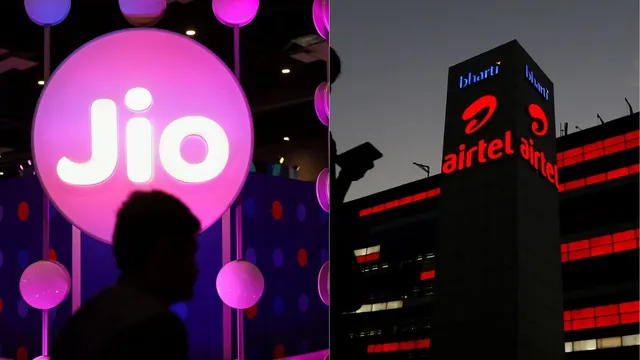- By Alex David
- Wed, 05 Nov 2025 06:05 PM (IST)
- Source:JND
India's 5G launch was touted as a technological revolution, promising lightning-fast gigabit speeds and near-zero latency. A year on, however, results speak otherwise: on both Airtel and Jio networks alike, that shiny 5G icon does not translate to faster or smoother experiences for most users; video buffering, call drops and patchy coverage remain common complaints among most. So what happened behind India's so-called 5G revolution? Here is our breakdown of what really happens behind its facade.
5G Promises vs Reality
When India’s telecom giants launched 5G, the expectations were sky-high. In practice, most users see speeds barely above 4G. Despite expensive new phones and flashy ads, even basic live streaming often stutters. The video exposé argues that India’s 5G story so far is one of over-promising and under-delivering, where marketing has outpaced real-world performance.
ALSO READ: Google Maps To Introduce Live Lane Guidance For Cars With Google Built-In
Airtel vs Jio: The Technology Split
Aspect | Jio (Standalone 5G) | Airtel (Non-Standalone 5G) |
Network Type | Built on a standalone 5G core — new, future-proof, and ultra-low latency | Built on existing 4G infrastructure — faster rollout, lower cost |
Potential | High (up to 10x faster, lower latency) | Moderate (limited by 4G bottlenecks) |
Deployment Cost | Expensive | Cheaper |
Real-World Performance | Inconsistent, often underwhelming | More stable and reliable day-to-day experience |
Jio may boast more advanced network design, yet Airtel frequently outperforms it in independent speed and reliability tests conducted independently by third-party organisations. The key takeaway here is that having superior technology alone does not ensure optimal user experiences - execution and optimisation matter more.
The Spectrum Strategy
Jio spent heavily on low-band spectrum to maximise coverage, ensuring users see the 5G logo virtually everywhere — from metros to remote towns. But low-band 5G offers speeds often under 100 Mbps, barely better than average 4G.
Airtel focused its 5G coverage and speed efforts on mid-band spectrum, creating a balance between coverage and speed for their 5G solution. This makes their 5G solution suitable for urban and suburban areas while restricting rural reach.
The “5G Icon” Illusion
That 5G icon on your screen is not a speed indicator. It simply means your phone is connected to a 5G tower. In reality, the network capacity, spectrum band, and infrastructure quality determine whether you actually get faster speeds.
Both Jio and Airtel capitalise on this visual marketing — making users feel they’re getting next-gen speeds when, in truth, most are still on connections only marginally faster than 4G.
India’s Infrastructure Problem
Only 38% of telecom towers in India are fiber-connected, the backbone needed for true 5G speeds. The majority still rely on microwave links — old wireless backhaul tech that severely limits throughput.
Government programs to expand fiber coverage have been bogged down by red tape, permissions, and slow ground execution, leaving the “5G highway” connected to what’s essentially a “village road.”
The “Made-in-India” Gamble
Jio and BSNL have implemented locally developed 5G stacks -- hardware and software developed locally - in an attempt to lessen reliance on global vendors like Ericsson or Nokia. While this move is strategic in the long run, its drawback lies in terms of reliability: these new systems may still be developing, leading to network bugs, inconsistencies, or congestion in the short term.
Who Actually Benefits from 5G?
The real impact of 5G isn’t on social media or movie downloads. It lies in industrial use cases:
- Smart factories and private 5G networks
- Remote surgeries and telemedicine
- Smart cities and IoT systems
For now, consumers are paying the bill that helps build this industrial infrastructure. Everyday users subsidise the long-term development of enterprise-grade networks.
The Economic Reality
India’s telecom sector is sitting on ₹6.6 lakh crore in debt (by 2025 estimates). To recover, operators are phasing out cheap plans and preparing for tiered pricing — where real, high-speed 5G will likely cost extra.
The pattern is predictable:
1. Users get free or unlimited 5G.
2. Network congestion rises.
3. Companies introduce “premium” paid plans to restore promised speeds.
It’s not a scam in the criminal sense — but it’s certainly a strategic play on consumer expectations.
ALSO READ: Amazon And Perplexity Clash Over AI Shopping Assistant Comet
Shared Blame
The slow 5G reality is a collective failure:
- Telcos rushed marketing before building infrastructure.
- The government auctioned costly spectrum without ensuring tower fiberisation.
- Consumers expect advanced tech at low prices, forcing operators to cut corners.
Final Thoughts
India’s 5G rollout is more evolution than revolution — an ongoing experiment shaped by economic constraints, infrastructure gaps, and marketing hype. True 5G performance will arrive gradually, and when it does, it’ll benefit industries far more than individual users.
For now, the “5G icon” on your phone is less a symbol of ultra-fast internet — and more a reminder that India’s digital transformation still has a long road ahead.

